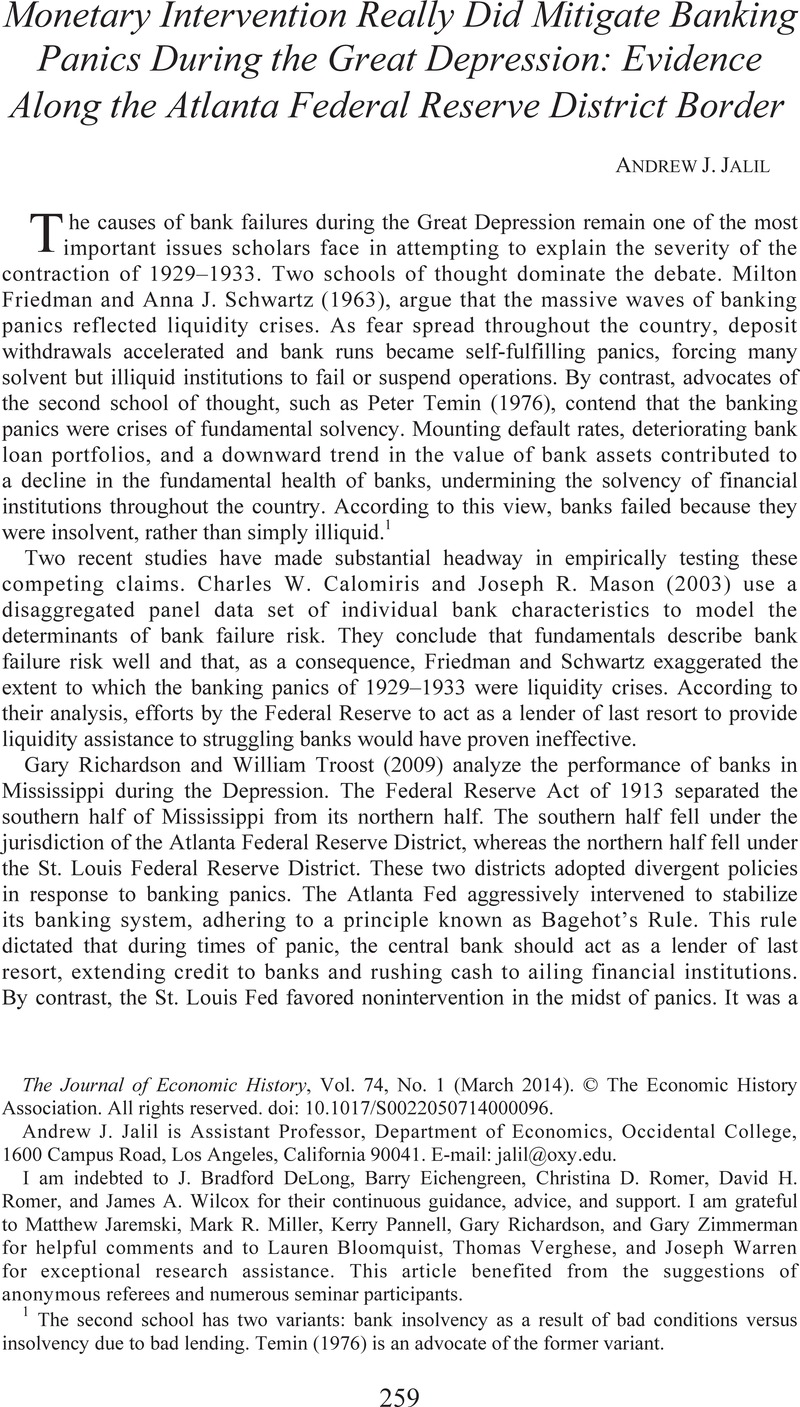Crossref Citations
This article has been cited by the following publications. This list is generated based on data provided by
Crossref.
Hansen, Mary Eschelbach
and
Ziebarth, Nicolas L.
2017.
Credit Relationships and Business Bankruptcy during the Great Depression.
American Economic Journal: Macroeconomics,
Vol. 9,
Issue. 2,
p.
228.
Anderson, Haelim
Barth, Daniel J.
and
Choi, Dong Beom
2017.
Reducing Moral Hazard at the Expense of Market Discipline: The Effectiveness of Double Liability before and during the Great Depression.
SSRN Electronic Journal,
Carlin, Bruce I.
and
Mann, William
2018.
The Real Effects of Fed Intervention: Revisiting the 1920-1921 Depression.
SSRN Electronic Journal ,
Chwieroth, Jeffrey M
and
Walter, Andrew
2019.
The financialization of mass wealth, banking crises and politics over the long run.
European Journal of International Relations,
Vol. 25,
Issue. 4,
p.
1007.
Chwieroth, Jeffrey M.
and
Walter, Andrew
2019.
The Wealth Effect.
Quincy, Sarah
2019.
'Loans for the Little Fellow:' Credit, Crisis, and Recovery in the Great Depression.
SSRN Electronic Journal ,
Kolak, Marynia
and
Anselin, Luc
2020.
A Spatial Perspective on the Econometrics of Program Evaluation.
International Regional Science Review,
Vol. 43,
Issue. 1-2,
p.
128.
Imai, Masami
Okazaki, Tetsuji
and
Sawada, Michiru
2022.
The effects of lender of last resort on financial intermediation during the great depression in Japan.
European Review of Economic History,
Vol. 26,
Issue. 3,
p.
448.
Frydman, Carola
and
Xu, Chenzi
2023.
Banking Crises in Historical Perspective.
Annual Review of Financial Economics,
Vol. 15,
Issue. 1,
p.
265.
Dayal, Vikram
and
Murugesan, Anand
2023.
Demystifying Causal Inference.
p.
227.
Rieder, Kilian
Anson, Michael
Bholat, David
and
Thomas, Ryland
2023.
Dating the Lender of Last Resort.
The Economic Journal,
Vol. 133,
Issue. 652,
p.
1657.
Rieder, Kilian
2023.
Handbook of Cliometrics.
p.
1.
Anderson, Haelim
Erol, Selman
and
Ordoñez, Guillermo
2023.
Stability Pass-through: Federal Reserve Liquidity Provision and Interbank Networks of Shadowy Banks.
SSRN Electronic Journal,
Rieder, Kilian
2024.
The Comparative Effects of Financial Stability Policies.
SSRN Electronic Journal,
Rieder, Kilian
2024.
Handbook of Cliometrics.
p.
1661.
Quincy, Sarah
2024.
Loans for the “Little Fellow”: Credit, Crisis, and Recovery in the Great Depression.
American Economic Review,
Vol. 114,
Issue. 12,
p.
3905.
Carlin, Bruce
and
Mann, William
2024.
An Experiment in Tight Monetary Policy: Revisiting the 1920–1921 Depression.
Journal of Financial and Quantitative Analysis,
Vol. 59,
Issue. 5,
p.
2299.
